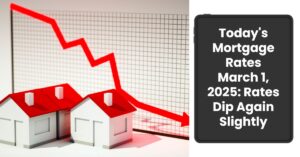Thinking about buying or selling a home in Irvine? You're not alone. The Irvine housing market is always a hot topic, and staying on top of current trends is crucial, whether you're a first-time buyer or a seasoned investor. Right now, the Irvine housing market is somewhat competitive. Homes are selling for a median price of $1.6 million, which is up 7.4% from last year. While prices have increased, the number of homes sold has slightly decreased, and homes are staying on the market longer. Let's dive into the details and see what's really happening.
Irvine Housing Market Trends: What You Need to Know in 2025
Home Sales
Looking at home sales in Irvine, we see a slight dip in activity. According to Redfin data from January 2025:
- There were 120 homes sold in Irvine, which is down 7.7% compared to the same period last year.
- This decrease suggests a potential slowdown in sales velocity. However, it’s important to consider that a month’s data alone does not establish a definite trend.
While the number of homes sold has decreased, the story isn't quite that simple. We need to look at other factors like inventory and days on the market to get the full picture.
Home Prices
Let's talk money! Home prices are often the first thing people want to know about. Here's what's happening in Irvine:
- The median sale price of a home in Irvine was $1,578,500 in January 2025.
- This represents a 7.4% increase compared to January 2024.
- The median sale price per square foot is $820, which is up 2.2% year-over-year.
So, prices are still climbing in Irvine, even with a slight decrease in sales. This indicates that demand is still relatively strong, pushing prices upward despite other market factors.
Are Home Prices Dropping?
This is the question on everyone's mind, right? Are we about to see a crash? While it's impossible to predict the future, here's what the data suggests about whether home prices are dropping in Irvine:
- Currently, prices are not dropping. They are still increasing year-over-year.
- However, the rate of increase may be slowing down compared to previous periods.
- It's essential to keep an eye on the market and watch for any shifts in the coming months.
From my perspective, I believe that while a significant price drop is unlikely in the short term, the market might be entering a period of moderation. The rapid price appreciation we saw in recent years may be cooling off, leading to a more balanced market.
Comparison with Current National Median Price
To put Irvine's home prices into perspective, let's compare them to the national median:
- The national median home price is $396,900 (January 2025 data).
- Irvine's median home price ($1,578,500) is approximately 277% higher than the national average.
This significant difference highlights just how expensive the Irvine housing market is compared to the rest of the country. Irvine's home prices are significantly higher than the national average.
Housing Supply
Housing supply, or inventory, plays a crucial role in determining market dynamics. In Irvine, it is currently unknown.
- The number of new listings coming onto the market will significantly influence future price trends and market conditions.
- Pay attention to this metric if you are looking to understand potential market direction.
Is It a Buyer's or Seller's Housing Market?
Determining whether it's a buyer's or seller's market is essential for navigating any real estate transaction. As of early 2025, the Irvine market leans towards being a neutral market:
- Homes in Irvine receive an average of 3 offers.
- On average, homes in Irvine sell after 59 days.
- The average homes sell for about 1% below list price and go pending in around 48 days.
This suggests a market where buyers have some leverage, but sellers still hold a reasonable amount of power. Homes are selling, but not as quickly or easily as they were a year ago. The Irvine housing market is somewhat competitive.
Market Trends
Let's take a closer look at some key market trends in Irvine:
- Days on Market: Homes are staying on the market longer. The median days on market increased to 59 days, up from 31 days last year.
- Sale-to-List Price Ratio: This ratio has decreased slightly. Homes are now selling for about 99.1% of the list price, a decrease of 1.3 percentage points year-over-year.
- Homes Sold Above List Price: Fewer homes are selling above list price. Only 23.3% of homes sold above list price, down 15.1 percentage points from last year.
- Homes with Price Drops: The percentage of homes with price drops is increasing. 15.5% of homes had price drops, up 5.9 percentage points from last year.
These trends indicate a gradual shift towards a more balanced market. Buyers have more time to consider their options, and sellers may need to be more realistic about their pricing expectations.
Impact of High Mortgage Rates
High mortgage rates significantly impact housing affordability and demand. Here's how they are affecting the Irvine market:
- As of early March 2025, the average 30-year fixed mortgage rate is around 6.5%.
- While this rate is lower than the peak rates we saw in late 2023 and early 2024, it's still considerably higher than the rates of just a few years ago.
- Most forecasts predict mortgage rates to remain at or slightly above this level throughout the year.
The impact of these rates includes:
- Reduced buyer affordability: Higher rates increase monthly mortgage payments, making it more challenging for potential buyers to qualify for a loan.
- Cooling demand: As affordability decreases, fewer people are willing or able to buy, leading to a slowdown in demand.
- Price stabilization: With decreased demand, price growth may moderate or even decline in some areas.
The following table summarizes the current Irvine Housing Market in Jan 2025.
| Metric | Value | Year-over-Year Change |
|---|---|---|
| Median Sale Price | $1,578,500 | +7.4% |
| Number of Homes Sold | 120 | -7.7% |
| Median Days on Market | 59 | +28 |
| Sale-to-List Price | 99.1% | -1.3 pt |
| Homes Sold Above List | 23.3% | -15.1 pt |
| Homes with Price Drops | 15.5% | +5.9 pt |
My Final Thoughts on the Irvine Housing Market Trends
The Irvine housing market is a complex mix of factors. While prices are still up year-over-year, there are signs that the market is cooling down. Higher mortgage rates, increased inventory, and longer days on market are all contributing to a more balanced environment.
If you're a buyer, now might be a good time to enter the market. You have more options, more time to make a decision, and potentially more negotiating power. Just be sure to do your research, get pre-approved for a mortgage, and work with an experienced real estate agent.
If you're a seller, it's crucial to be realistic about your pricing expectations. Don't overprice your home, and be prepared to negotiate. Presentation is key, so make sure your home is in top condition before listing it.
Ultimately, the Irvine housing market is still a desirable place to live, with excellent schools, safe neighborhoods, and a thriving economy. By staying informed and working with knowledgeable professionals, you can successfully navigate the market, whether you're buying or selling.
Irvine Housing Market Forecast and Likelihood of a Crash
Looking forward, market experts suggest that the Irvine housing market is likely to continue appreciating; however, signs indicate a potential stabilization. Analysts project modest price growth compared to the previous explosive rates, as more inventory is anticipated to enter the market in the coming months. Moreover, rising interest rates could deter some buyers, leading to a more balanced market that could alleviate pressure on home prices.
Experts predict that while a crash in the Irvine housing market is unlikely, a period of correction or stabilization could occur. The health of the economy, interest rates, and housing supply are vital factors influencing this trajectory.
Overall, the Irvine housing market exhibits characteristics of both an attractive investment opportunity and a challenging environment for buyers due to competitive pricing and limited inventory. It reflects broader trends in California's real estate landscape while showcasing the unique attributes that make Irvine an exceptional place to live.
Looking ahead, several considerations might influence the Irvine real estate market:
- Economic Indicators: Keep an eye on broader economic indicators such as employment rates, GDP growth, and interest rates. These factors play a crucial role in shaping housing demand and affordability.
- Supply Levels: The balance between supply and demand will be a significant determinant of future market trends. If housing inventory increases, it could ease the competitive environment and potentially impact the frequency of sales over list price.
- Local Developments: Irvine's real estate market could be influenced by ongoing local developments, infrastructure projects, and changes in the business landscape. These can impact the desirability of the area and subsequently affect property values.
- Interest Rates: Changes in mortgage interest rates can influence affordability and thus impact both buying and selling activity.
Should You Invest in the Irvine Real Estate Market?
Irvine's strong fundamentals make it an attractive option for real estate investors:
- Long-Term Growth Potential: The city's strong economic base, limited housing supply, and high demand suggest the potential for long-term appreciation.
- Rental Demand: Irvine's large student population and influx of professionals create consistent demand for rental properties.
- Diversification: Investing in Irvine real estate can offer portfolio diversification and potential passive income streams.
Exploring Irvine Neighborhoods
Irvine comprises a diverse range of neighborhoods, each offering a unique character and appeal:
- Woodbridge: Known for its lakes, parks, and family-friendly atmosphere.
- University Park: Popular among students and young professionals due to its proximity to UC Irvine.
- Turtle Rock: An upscale community with custom homes and scenic views.
- Westpark: Offers a mix of housing options and is known for its well-maintained parks.
- Northwood: Characterized by tree-lined streets and a strong sense of community.
Table: Comparing Irvine Neighborhoods
| Neighborhood | Median Home Value | Pros | Cons |
|---|---|---|---|
| Woodbridge | $1.6 Million | Family-friendly, abundant amenities | Higher price point |
| University Park | $1.3 Million | Proximity to UC Irvine, vibrant atmosphere | Can be more congested |
| Turtle Rock | $2.5 Million | Upscale living, scenic views | Limited housing inventory, high price point |
| Westpark | $1.4 Million | Diverse housing options, central location | Can be more competitive |
| Northwood | $1.5 Million | Strong community feel, excellent schools | Limited commercial development |
(Note: Median home values are approximate and can vary significantly within each neighborhood.)
Long-Term Outlook for the Irvine Housing Market
Predicting the future of any housing market is inherently complex, but several factors point to continued desirability for Irvine real estate:
- Strong Economic Fundamentals: Irvine boasts a diversified economy with a strong presence in industries like technology, healthcare, and education.
- Limited Housing Supply: The city's master-planned nature and limited available land restrict significant new construction, supporting long-term value.
- High Quality of Life: Irvine's exceptional schools, low crime rates, and abundant amenities are likely to continue attracting residents.
Conclusion
The Irvine housing market, while competitive, offers compelling opportunities for those seeking to buy, sell, or invest. By understanding the factors shaping the market, working with experienced professionals, and conducting thorough research, you can navigate this dynamic landscape successfully. Whether you're drawn to Irvine's top-rated schools, thriving job market, or exceptional quality of life, this Southern California city remains a highly desirable place to call home.
- Southern California Housing Market Prices and Forecast 2025
- California Housing Market: Prices, Trends, Forecast 2025-2026
- High Mortgage Rates Slam California Housing Market in January 2025
- Real Estate Forecast Next 5 Years California: Crash or Boom?
- How Much Do Real Estate Agents Make in California?
- Average Home Price in Los Angeles Reaches $953K






